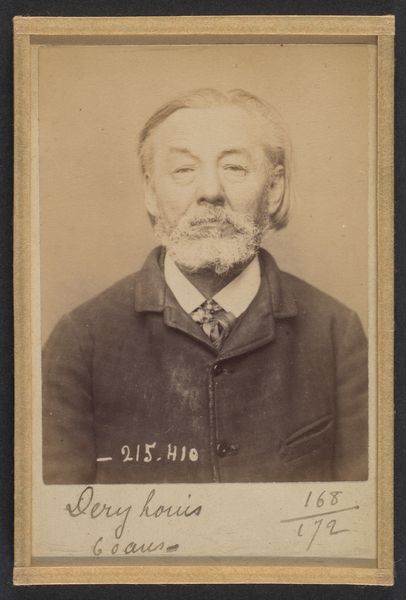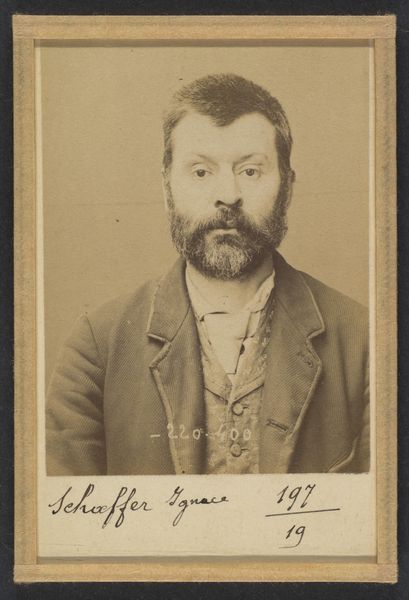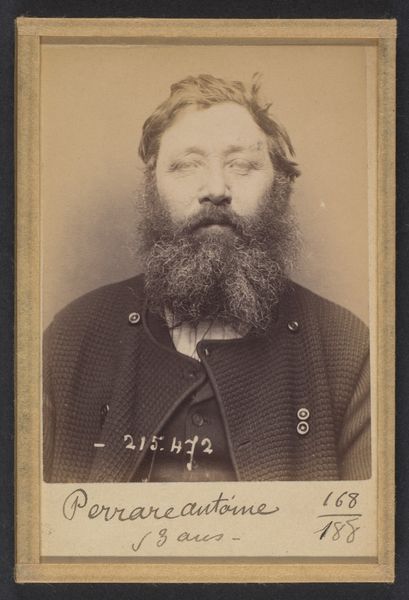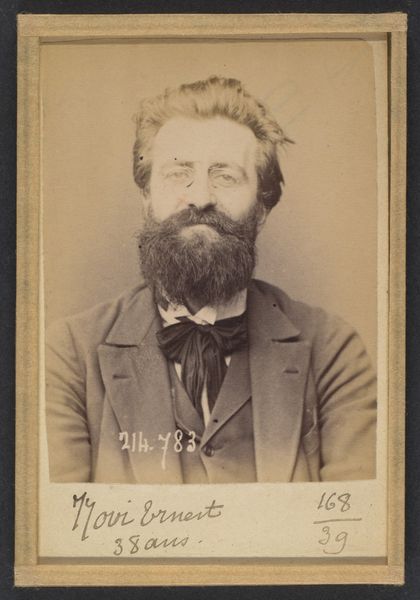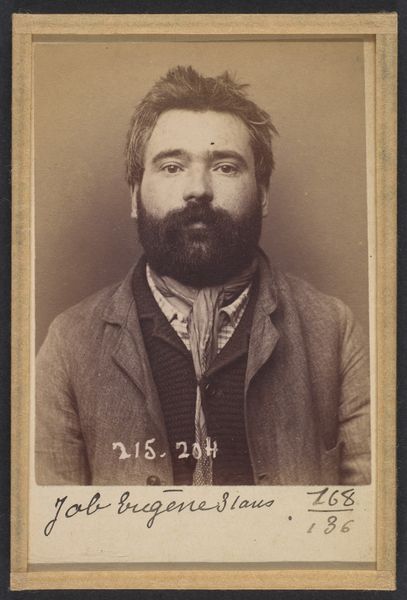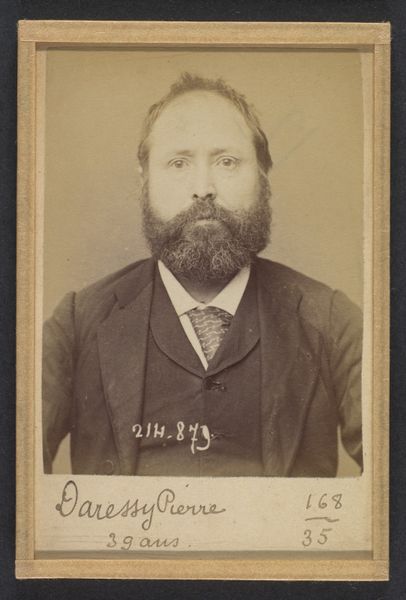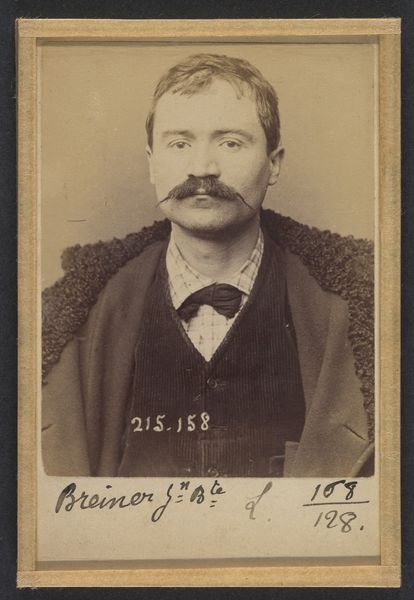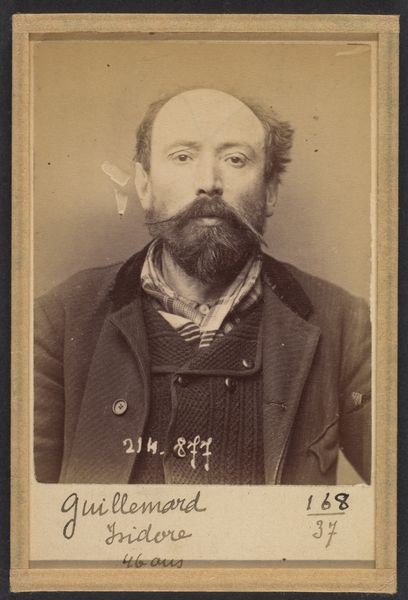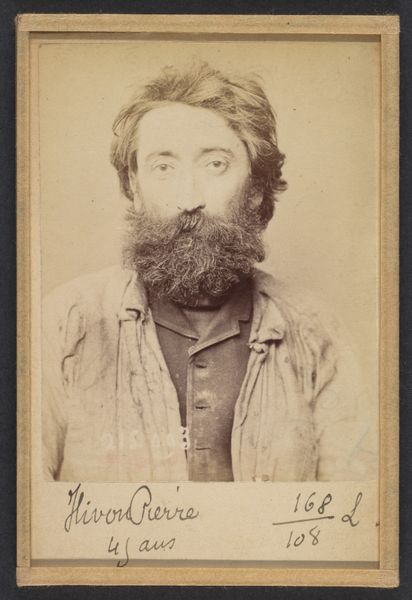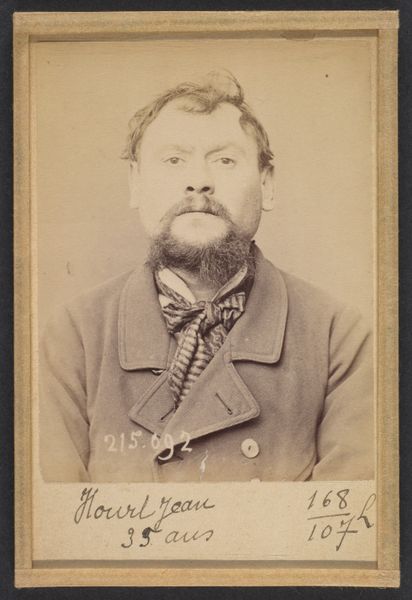
Bligny. André, Eugène. 58 ans, né à Vincennes. Serrurier. Anarchiste. Fiché le 2/3/94. 1894
0:00
0:00
photography, gelatin-silver-print
#
portrait
#
portrait
#
street-photography
#
photography
#
gelatin-silver-print
#
history-painting
Dimensions: 10.5 x 7 x 0.5 cm (4 1/8 x 2 3/4 x 3/16 in.) each
Copyright: Public Domain
Curator: Up next, we have a fascinating photograph from 1894 by Alphonse Bertillon. It's titled "Bligny. André, Eugène. 58 ans, né à Vincennes. Serrurier. Anarchiste. Fiché le 2/3/94.” It's a gelatin silver print now held at the Metropolitan Museum of Art. Editor: There's something incredibly direct and poignant about this image. It feels stark, honest. His eyes hold a mixture of weariness and defiance, wouldn't you agree? Curator: Absolutely. Bertillon was a French police officer and biometrics researcher who pioneered the use of photography for criminal identification. This is one of his mugshots. But more than just a record, it gives insight into the social anxieties of the time. Editor: Yes, "anarchiste" scrawled there, a label laden with meaning back then, conjuring up ideas of chaos and revolt, all distilled into one man’s face. His untamed beard certainly adds to the image, an emblem for nonconformity. I see a symbol of resistance there. Curator: That resistance might be overstated. He's been processed. Stripped of agency. Consider that Bertillon's system was born from a desire to categorize and control individuals deemed threats to the established order. These images played a crucial role in that. Editor: True, it served a control mechanism. But there is that undeniable element of the individual resisting even this clinical process, even subtly. Maybe it's wishful thinking, but I do see it as a representation of how authorities have long targeted those who dissent, using visual tools to fix identities. Curator: His inclusion in the Met's collection challenges the photograph's original function. Here, it sparks reflection, prompting critical thinking regarding our relationship with power structures, photography's role in it, and, obviously, anarchism as a political stance. Editor: Ultimately, it makes us ponder the blurry line between documentation and propaganda, between individual and the system that tries to define them. An incredibly evocative work on several levels. Curator: It's a potent reminder of how photographic imagery participates in historical processes, often becoming freighted with unintended narratives, open to reinterpretation. A testament to how artifacts take on entirely new significance as time advances.
Comments
No comments
Be the first to comment and join the conversation on the ultimate creative platform.
